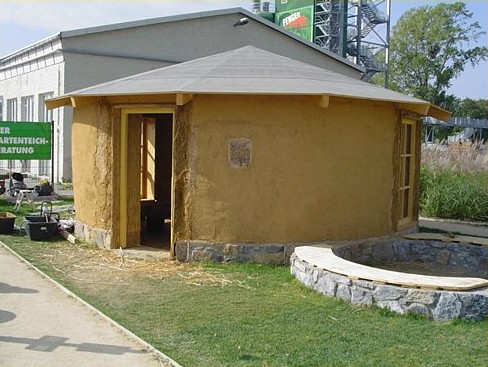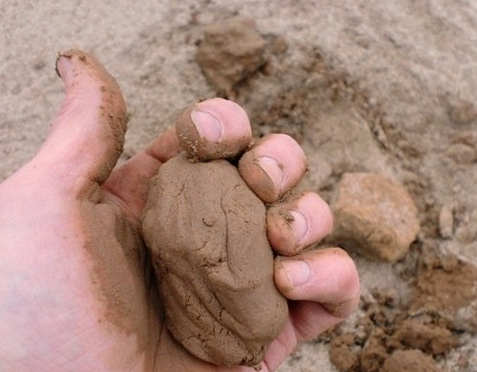Plaster clay is an old way to finish the walls, which is at the present time gaining increasingly popular. Houses decorated by this material "live" are distinguished by special comfort, certainly contributing to the improvement of their tenants.
Content
Why should you choose the clay plaster?
Interest in this material recently is not random. In addition to the compliance of the current trend of construction (applications, if possible, extremely natural materials), it has another number of advantages.
- Hypoallergenic material acting as a filter
- Absorbs excessive moisture, adjusting the microclimate inside the house and keeping the integrity of the surface during the outer finish
- Affordable price
- No waste and reuse
- Exceptionally natural components of the composition of the decoration
- Easy to prepare a solution and application
- Excellent protective characteristics
- Elasticity that prevents destruction.

Important! When finishing the inner walls, plaster made of clay, decorated with a decorative pattern, refresh the design and give special attractiveness. The same technology can be applied when finishing the floor and ceiling.
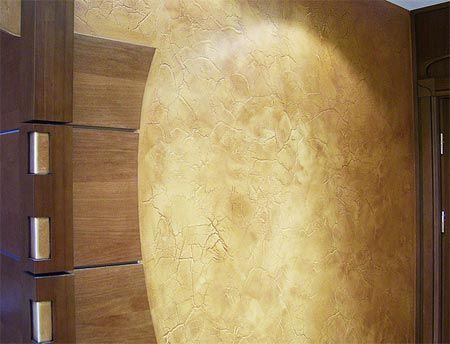
When choosing clay, keep in mind and some important nuances of the reverse side of its application:
- Sufficiently long trim and drying time
- When finishing the outer surface, it is possible to crack the material after a while, especially under the influence of the direct scorching sun and constant high humidity.

Important! Separately, we note that the cost of plastering walls of clay at the rate of the cost of materials is low. With independent execution of all works, clay can be digging on its site. When searching for builders' specialists for plastering clay walls, the price of the entire process can become very high due to the characteristics of the material and the work skill needed for the professional challenge.

Types of clay solutions
For the preparation of the solution use exclusively natural components:
- clay
- sand
- water
- sawdust (from alder, pine or oak) or another type of construction fiber
- horse manure (Kizyak).

Depending on the selected components and the principle of their compound, several types of clay plaster are distinguished:
- clay with sand adding
- clay with the addition of sawdust, needles, straw, felt, wool
- clay mixed with sand and fiber filler.
Important! To each type of solution you can add kizyak to zoom in the plasticity and thermal conductivity of the finished material. To increase the strength indicators, cement is sometimes added, but this solution necessarily requires timely application of the entire mass, until it dries.
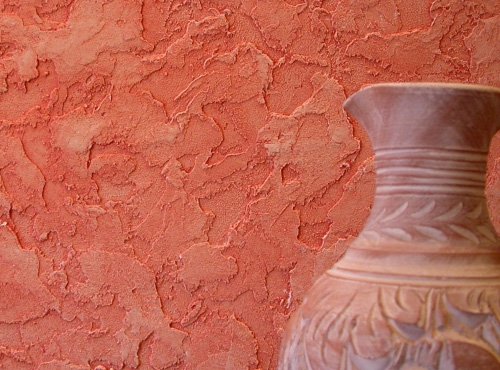
How to choose a solution from clay for plastering walls?
When choosing a formulation, in the form of a primary criterion, consider the requirement for thermal insulation and the place of application:
- The combination of clay with fiber is the most durable and warm version. It will be an excellent solution for the draft finishing of the outer walls.

- When adding sand, plasticity and heat-conductivity are reduced. A good option for wooden houses in which the original thermal insulation at a high level due to the natural properties of the wood itself.
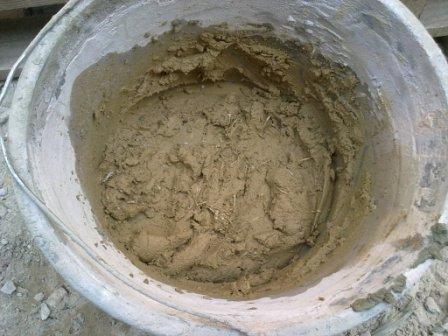
- The clay-sand mix is \u200b\u200bmore suitable for the final, finishing finishes of the exterior or inner walls.

Important! Please note that one more of the advantages of any of these solutions is the possibility of applying to any material. Each of the solutions is the plastering of wooden walls of clay, concrete or brick grounds - the correct, not requiring changes in technology.

Instruments
In order to make the plaster of the walls of clay with their own hands, prepare the following tools:
- capacities of the desired volume for mixing (oriented on its surface area)
- shovel
- buckets
- spatulas
- concrete mixer (for large amounts of work)
- metal brush
- sieve
- metal plaster mesh or dunca (a frequent grid of thin wooden plates)
- nails or self-tapping screws for mounting the lattice to the wall
- hammer or screwdriver.

Technology preparation of solution
Given the fact that the clay, taken from different soil, differs in its qualities, does not exist accurate prescription proportions. But there are general rules for cooking technology.
Sequencing:
- Measure the right amount of all leaving.

Important! Select the proportion yourself, prepare a pre-small portion of the mixture in various versions. The combination of clay and sand change, for example from 1: 2 to 1: 5. Suitable plasticity of the finished mass and is an indicator of the correct recipe option.
- Soak clay for a day.

- Mix swelling clay.

- Straighten it after turning.

- Satisfy sand and sawdust when using them.

- Make sure to clean raw materials.
Important! From how clean, without foreign impurities, all components will depend on the strength and durability of the finished coating.
- Gradually, add fillers and water in small portions.
- Mix thoroughly.
- Bring the solution to the desired consistency.
Important! In order for the mixing process not to be too time-consuming, and the resulting mass was a homogeneous consistency, in one container, prepare a mixture of clay, with a number of no more than 4-5 buckets.

How to check the plasticity of the clay solution?
To understand how correctly the proportions are chosen, check the quality of the mixture of the mixture for plaster clay with one of the following methods:
Look carefully at the resulting mass. Proper consistency looks like a thick sour cream or well-softened plasticine.
- Ride the ball from clay. Press it out, flattering completely to thickness in 1 cm. With the correct composition, the mass remain homogeneous, without cracks around the edges.

- Form the ball and drop it on the floor from a height of 1 meter. It should not crumble, crack down (this is an indicator of an increased amount of sand) and should not be strongly changed, spreading over the surface (a lot of water in solution).
- Rove the rope from clay, with a diameter of 1-2 cm, 10-20 cm long. Bend it into the arc. The edges should not crack.
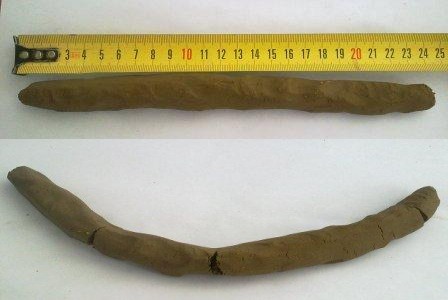
Important! Note that it is precisely from the correct consistency that the strength of the decoration layer and the duration of operation without the need for repair work depends.
How to shook the walls of clay?
In the old days, this work was performed by a large team, a man responsible for the construction process was monitored by the uniformity of application. And the rest with women and children loose pieces on the wall.
Important! Plan in advance the entire course of work for the summer, so that the drying of the solution occurred in a natural way.
Modern technology is not much different, only the use of more modern tools.
Sequencing:
- Find assistants to execute the process in a shorter time.
- Prepare the solution according to the selected recipe.
Important! If you do not immediately do it immediately after it is prepared, and it is dropped - update, dissolving a little water before getting the desired consistency.
- Secure the dranco or the grid on the wall surface with nails or screws.
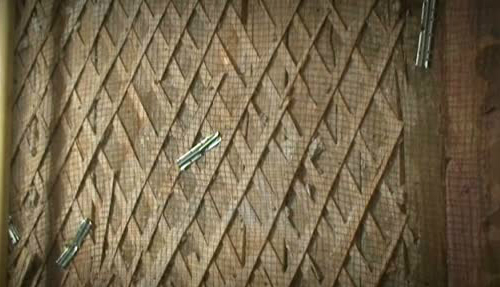
- Apply clay with pieces on the grid.
Important! Focus on the maximum thickness of the entire plaster at 3-5 cm.
- Do not equal this layer to ensure good grip with the following.

- Wait for drying.
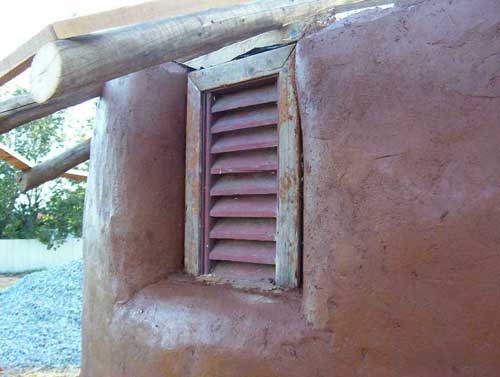
Important! Take into account the slow dried speed. Approximately 1 cm of the clay layer at a suitable temperature dries about 2 days. Full drying occurs after 1-2 months.
- Apply the following layer.
- Role using a spatula.
- Wait for drying.
- Clean the surface.
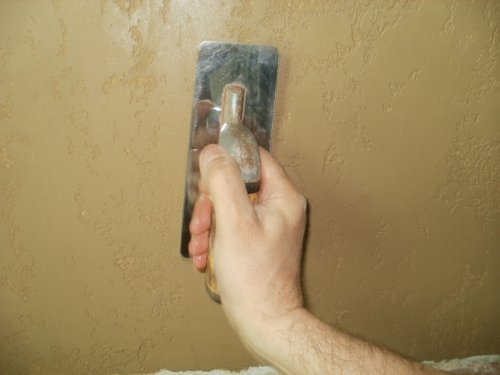
- Apply the finishing layer.
Important! For the last layer, it is permissible to use a more liquid solution with applying the "spray" method and adding a small amount of lime.
- Make the final layer as thin as possible.
- Wait for complete drying.

Video
Review the applied video plaster clay plaster to clearly understand the course of work and the principle of application and the possibility of decorating.
Conclusion
The decoration of clay walls is an excellent solution that will delight with its naturalness and profitability. The whole process, although it stretches for quite a long time, will be interesting and, as you have already been convinced, not difficult.


